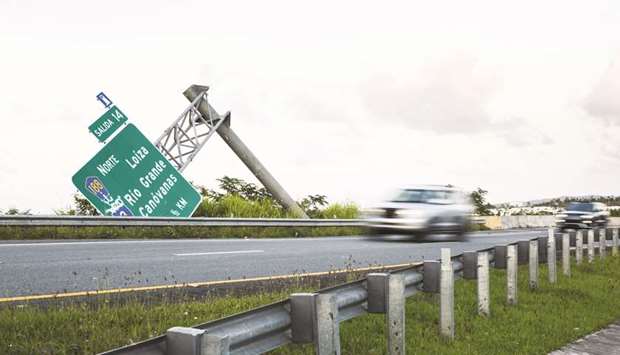But residents like Marie Rivera were doubtful — and a little angry, too.
“It’s not fair to pay the bondholders, when the Puerto Rican people are still suffering the consequences of what Hurricane Maria left us,” said Rivera, a 38-year-old single mother and hotel sales manager in San Juan. “This is the type of situation that leaves you wondering if it’s worth making all these sacrifices, or if it’s better to just go and move to the States.”
The federal board, created by the US Congress, is trying to chart Puerto Rico’s resurrection from a financial crisis that built over years, only to be temporarily worsened by the September storm that left its electricity system in tatters and caused thousands of residents to leave.
By cutting spending, improving tax collections and taking steps to encourage businesses, the board is projecting that Puerto Rico’s central government can swing to a $6.7bn surplus over the next six years before accounting for debt payments. That’s about $400mn more than a previous estimate from Governor Ricardo Rossello, whose steadily more sanguine forecasts caused bond prices to rally this year, even though how much will be repaid will be hashed out in bankruptcy court.
But the numbers are based on the notion that Puerto Rico’s growth prospects have actually improved since Hurricane Maria slammed into the island as a powerful Category 4, battering infrastructure and hobbling its already feeble economy. Not long before the plan was released, the island lost power yet again, the latest in a series of episodes that show it’s still a volatile place to live and do business, even seven months after the storm.
Hospitals and the main international airport temporarily ran on emergency power. A generator fire filled the streets of a trendy San Juan neighbourhood with smoke, and hundreds of businesses were forced to close.
The outage was attributed to an excavator incident involving a company subcontracted to help in power restoration efforts. Another blackout that occurred last week, affecting more than 800,000 clients, was caused by a fallen tree.
The new fiscal projection marks the latest boost to the estimates for the financial recovery of the territory, which is set to receive about $62bn of federal aid and insurance money to help rebuild. The numbers were released late in the trading day on Wednesday, but earlier increases in surplus estimates have sparked rallies in Puerto Rico securities, causing some prices to double since December.
General obligations with an 8% coupon and maturing in 2035, the island’s most actively-traded security, changed hands on Wednesday for an average of 41.7 cents on the dollar, up from a record-low 20.75 cents on December 5, data compiled by Bloomberg show.
Desmond Lachman, a resident fellow at the American Enterprise Institute and former deputy director of the International Monetary Fund, said he’s concerned that some of the billions in US taxpayer aid destined for the disaster recovery may ultimately end up in the hands of bondholders.
“My concern is that they’re just going to use US taxpayer money to bailout the creditors, but meantime the island is going to languish,” Lachman said.
The federal board plans to certify the multi-year fiscal plan on Thursday in San Juan. Among other things, the plan calls for a series of austerity measures, including cutting pension benefits by an average of 10% beginning in 2020 to help curb spending and repair a retirement system that’s out of money. Governor Rossello has baulked at reducing pensions, saying it would place an undue burden on public workers and retirees. The board maintains that there needs to be shared sacrifice, and any cuts require legislative approval.
The turnaround plan, which has the stated purpose of fixing the island’s finances and reviving an economy that’s stuck in a decade-long recession, will cut spending for schools and municipalities and try to boost growth through labour reforms and relaxing certain regulations. Congress created the federal board in 2016 to address Puerto Rico’s debt crisis, as part of legislation that also gave the island a path to filing a form of bankruptcy.
Lachman, the former IMF official, said he questioned the logic of any plan that paints a rosy economic picture when the island is facing recurrent and accelerating out-migration. The island has lost about 2% of its population every year for the past four, without counting the massive but largely unaccounted for exodus after Maria.
“What kind of credibility can they have if they make one projection before the island gets hit by a once in a lifetime hurricane, and then suddenly it improves the situation?” said Lachman. “It just makes no sense at all.”



